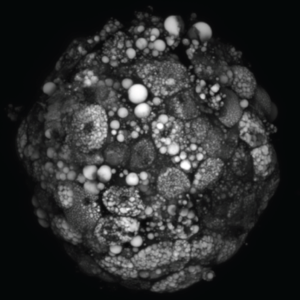Liver fibrosis

Metabolic dysfunction-associated steatotic liver disease is the hepatic manifestation of the metabolic syndrome and is characterized by excessive hepatic lipid accumulation. Initially benign steatosis may progress to a more aggressive form of fatty liver disease: metabolic dysfunction-associated steatohepatitis (MASH). MASH is characterized by liver inflammation, progressive scarring and fibrosis, which can dvelop into end-stage liver disease and is becoming the leading cause of liver failure in Europe and the US (1). Currently, there are very limited pharmacological treatments for MASH (2), warranting screening of chemical probes and chemogenomic libraries in assays with relevant phenotypic endpoints to shed light on the disease pathophysiology and enable identification of druggable targets.
- Schwabe R et al.; Mechanisms of Fibrosis Development in NASH (2020).
- Kemas et al.; Non-alcoholic fatty liver disease - opportunities for personalized treatment and drug development (2021).



